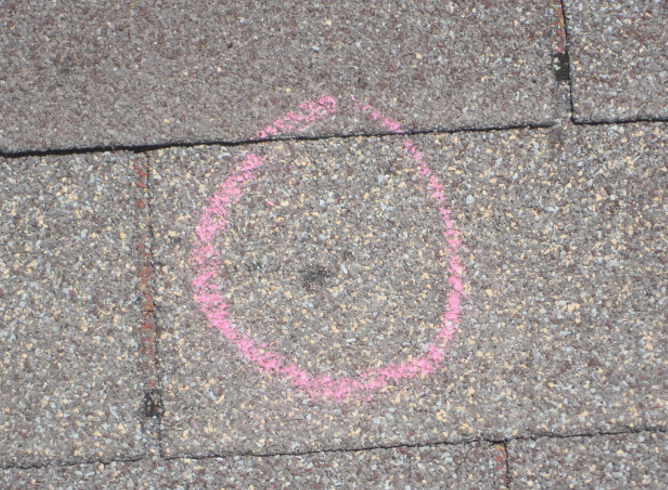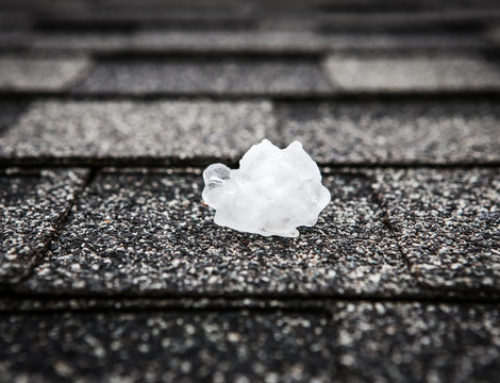How does hail form?
Hail forms when frozen water drops are lifted in turbulent wind regimes during thunderstorms. The frozen drops of water increase in size and eventually fall to earth as hail having been driven by a combination of gravity and wind forces. Hailstones vary in size from pea size (1/4-inch diameter), through marble size (3/4-inch diameter), to golf ball size (1 1/2inch diameter), and to even larger size in extreme storms. Hail size distributions tend to be localized with some roofs damaged, while others are not. Wind direction plays an important role, as well as roof pitch. A direct impact of hail on a shingle is more damaging than that of a glancing blow. Assessing hail damage is often accomplished by a roof inspection, which usually occurs several days to several months after the hail event. Determination of whether hail actually fell at a site can be made through statements and weather reports.

How do I know if my roof has damage?
When a storm hits your area, it may be difficult to see if the shingles on your roof have been damaged. When hail hits a shingle a ‘bruise’ appears that looks like a dark area where the grains or granules of the shingle have been knocked off and the base of the shingle is exposed. Recent hail impacts have a shiny look because the base material has been freshly exposed. Eventually, the ‘bruised’ area will become weathered and can lead to damage inside the home through leaks.
What do I do if my roof has hail damage?
If your roof has been damaged by hail, don’t hesitate! Contact us TODAY!











